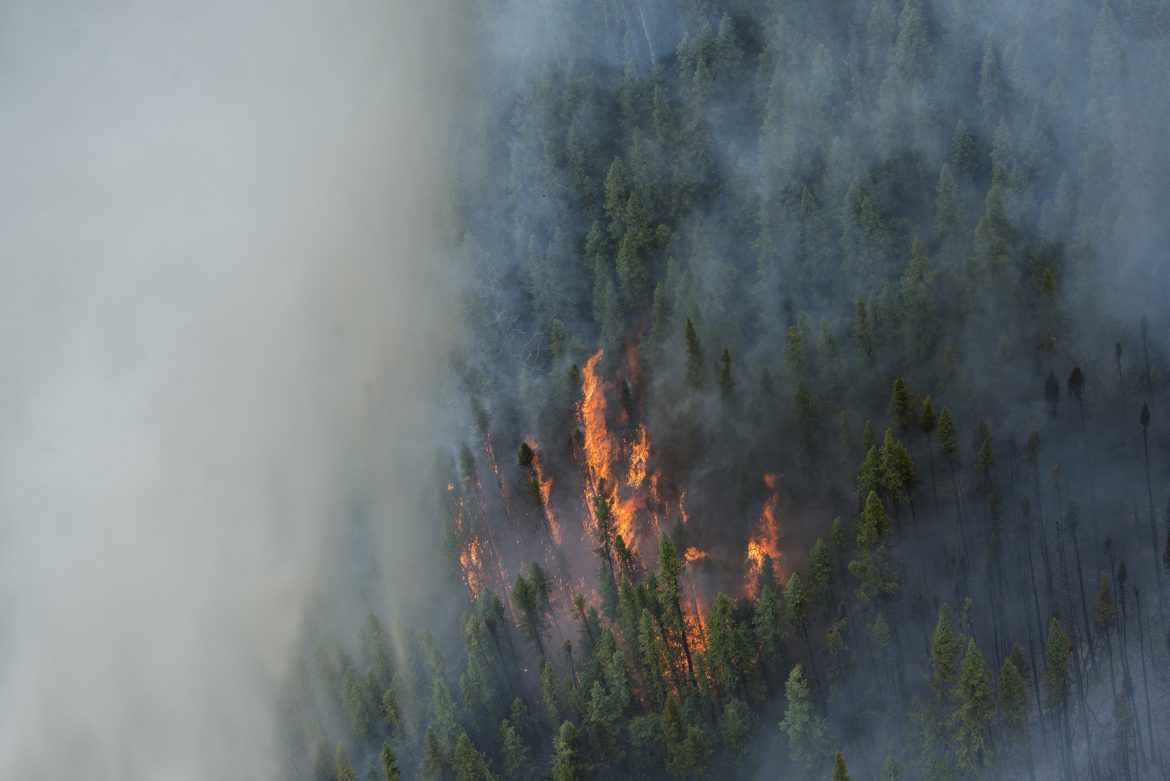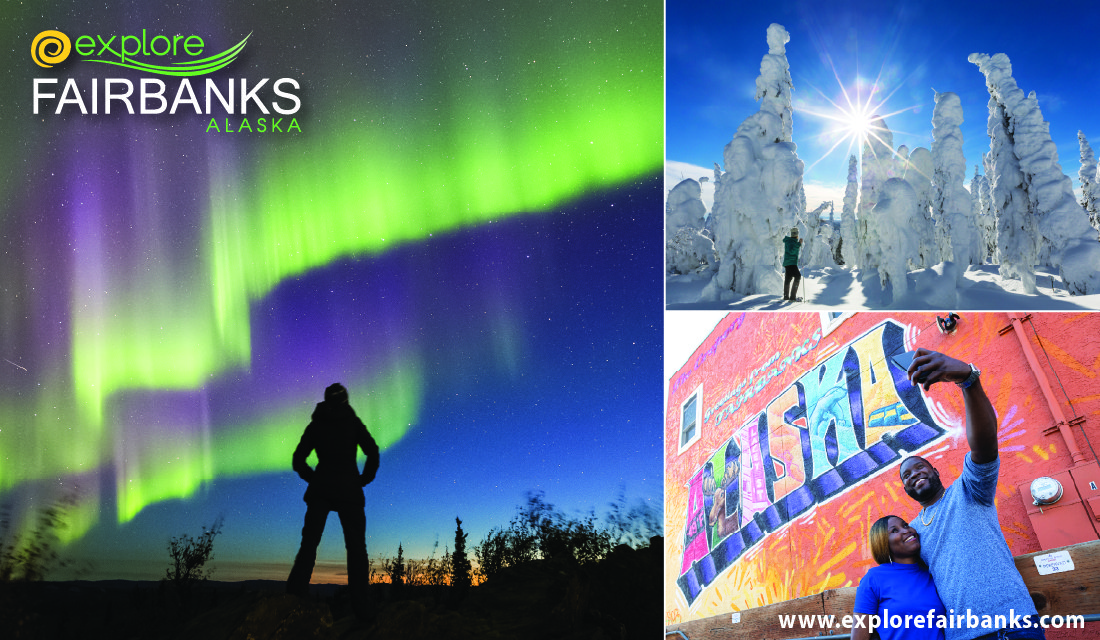Each of the 223 parks has a story The Municipality of Anchorage manages 223 parks covering 10,946 acres. Some, like Kincaid Park, are sprawling, while others are pocketed away in urban neighborhoods. Each has a unique story, including these three: Delaney Park (the “Park Strip” along 9th Ave): This downtown centerpiece hosts military monuments and summertime fairs and music. It was first cleared as a firebreak in 1917, then used as a golf course and an airstrip. In the 1920s, it was lined with brothels, which Mayor James Delaney ordered shuttered in the 1930s. Kincaid Park: Stretching between Turnagain Arm and Knik Arm, Kincaid is a local favorite for biking, disc golf, and miles of groomed and lighted ski trails. It was withdrawn from the Chugach National Forest in 1915 and later served as a Nike-Hercules missile battery before the park was pieced together beginning in the 1960s. It is…
Alaska Native Historian Holly Guise on the Value of Oral Histories Alaska Native historian Holly Miowak Guise (Iñupiaq) reflects on how recorded oral accounts connect Alaskans and incorporate Indigenous voices into today’s historical narratives. “Oral history is a powerful way to reach students, academics, and the public, enabling listeners to connect with a speaker, hear about their life, and perhaps more readily empathize with them. It’s also important for integrating Indigenous perspectives missing from Western archives. Oral histories are meant to be listened to. Even when a transcript is available, it’s best to listen to the audio, which offers human voice, character, intonation, and the interactions between the interviewer and interviewee. Today, websites or YouTube channels allow people to hear oral histories from their homes or classrooms. I created a website, ww2alaska.com, during a postdoctoral year at the University of California Irvine that hosts testimonies from Unangax̂ survivors of relocation…
Arctic Fox Joins Seasonal Changes in Alaska The arctic fox is a lively and iconic resident of the north. It lives across treeless coastal areas from the Aleutians to the northern arctic coast and east to the Canadian border. Arctic foxes in the Aleutian and Pribilof islands have a blue color phase that is dark or charcoal colored year-round, although it is lighter in winter. Arctic foxes elsewhere in the state are brown in summer but by November sport a luxurious white winter coat. The arctic fox is a different species than the slightly larger red fox, which is found more broadly across Alaska. Both foxes are omnivorous, but due to its tundra habitat, the arctic fox’s diet often relies on small mammals, including lemmings and tundra voles, nesting seabirds such as puffins and murres, or sometimes berries, eggs, and carrion.
Elements Last September, the remnants of Typhoon Merbok became one of the strongest storms ever known to hit Alaska, bringing 50-foot seas, devastating tidal surges, and hurricane-force gusts to the Bering Sea region. The giant storm impacted over 40 communities along 1,300 miles of mostly low-lying coastline. For many, recovery has been slow. Along Merbok’s path, rural communities lost homes and infrastructure. In the Norton Sound region alone, tidal surges topped a protective storm berm in Shaktoolik and destroyed three miles of road in Golovin. In Nome, winds fanned a fire that destroyed the Bering Sea Saloon. But in rural Alaska, damage to subsistence resources is just as important. Across the region, power outages threatened freezers full of winter food, while flood waters destroyed snowmachines, boats, and other equipment essential for hunting and fishing. Smokehouses, remote cabins, and fish camps—some that have been passed down through generations—were also damaged or…
Big federal parks are a draw for many, but state parks are often local favorites. Alaska has over three million acres of state parks, more than any other state. Its 156 parks stretch from north of Fairbanks to Kodiak to the islands of the southeast panhandle. Some are small, like the 40-acre Halibut Point Recreation Area along Sitka’s road system. Others are sprawling, like the 1.6-million-acre Wood-Tikchik State Park north of Dillingham, which with its clear-water lakes and soaring mountains is the largest state park in the country. Opportunities vary across the state park system. They include full RV hook-ups at the parks along the Alaska Highway between Fairbanks and Tok, or the remote wilderness of the 500,000-acre Chugach State Park outside of Anchorage, where you might see more moose than people. Some parks, like Totem Bight in Ketchikan, are set aside for historical purposes. Others, like the Alaska Chilkat…
Omnibus bill brought the designation The Chilkoot Trail—made famous by the 1898 Klondike Gold Rush that lured over 100,000 miners north to Skagway and the Yukon—is now a National Historic Trail. Congress has given this unique distinction to only 19 other trails, including the Oregon Trail, the Iditarod, and the Pony Express Trail. The 33-mile trail connects Dyea, near Skagway, to Lake Bennett, British Columbia. The U.S. side is within Klondike Gold Rush National Historical Park, where visitors can take in museum exhibits, ranger-led hikes, or the abandoned boomtown of Dyea. The trail itself is popular among day-hikers and backpackers, who can see numerous artifacts left behind by prospectors. In a statement, Angela Wetz of the National Park Service said the new designation will help the park tell the story of the gold rush and the area’s natural and cultural landscapes. The park also celebrates the Alaska Native history of…
Glaciers are Alive connects young audiences to wonders In her latest book, released in May 2023, Alaskan author Debbie Miller introduces young readers to the fascinating world of glaciers. Aimed at readers between four and eight years old, it is her 12th collaboration with long-time Alaskan illustrator Jon Van Zyle. Glaciers Are Alive is a journey down an Alaskan glacier, from its source high in the mountains to its terminus in the ocean. Along the way, readers meet the goats, bears, birds, and even the ice worms who thrive in glacial landscapes. Where the ice meets the ocean, Miller highlights the rich habitat it creates for seals and other marine life. And she describes how glacial ice keeps Earth cool. “Glaciers build habitat as much as they carve their way through it,” says Miller, who found inspiration for the story while writing her 2018 nonfiction book, A Wild Promise, about…
July brings the height of Alaska’s busy wildfire season. At this time, lightning, dry vegetation, long hours of warm daylight, and human activities all conspire to light new fires and keep old ones going. Wildfire is a natural part of most Alaskan ecosystems. As elsewhere, it contributes to forest health, nutrient cycling, and wildlife habitat. It occurs most frequently in the state’s interior and least in the south-coastal rainforests. But climate change is altering fire’s dynamics. First, Alaska’s snow season is arriving later and ending earlier, leaving more time for fire to burn. Summertime temperatures are also rising, leading to more dryness, heat, and expansion of fire northward. Lightning is also increasing. And warming nighttime temperatures help fires retain more energy overnight. Many Alaskan fires are allowed to burn in remote areas to maintain natural processes, but wildfires threatening communities are suppressed. Fighting fire is an important career in Alaska,…
Kevin Johnson of Ketchikan Native Tours Kevin Johnson loves his hometown. He and his wife, Melissa, own and operate Ketchikan Native Tours, which offers hiking, sightseeing, and more, all while sharing insight into southeast Alaska’s Indigenous cultures. “We love sharing our Alaska Native heritage and our connection to the land and ocean. We’re Ketchikanites too, so we know all the little intricacies of our beautiful community. Ketchikan has a tremendous Indigenous history with our Tlingit, Haida, and Tsimshian people, and our Aleut community and World War II internment camp history. There’s Norwegian influence, too. So we have this diversity of art, religion, and industries. It’s fascinating how it all forms the community of Kichxáan, as the original Tlingit inhabitants called Ketchikan. One of my favorite spots is Totem Bight State Historical Park. It’s a collection of restored totem poles from neighboring villages and it sits right on the water with…
A surge in both residential, utility scale development continues. A growing number of Alaskans are turning to solar energy. “In the last seven years there’s been a huge uptick in grid-tied solar in homes and businesses,” says Chris Pike, research engineer at the University of Alaska Fairbanks Center for Energy and Power (ACEP), which studies solar energy at high latitudes. Pike says that solar panels were once limited to cabins or other remote sites in Alaska but have now become mainstream. He gives Alaska’s high energy costs as one reason. “People are always looking to save money,” he says, explaining that solar is increasingly competitive with other energy sources. Pike adds that while a state like Arizona can produce more solar energy, the savings on Alaska’s high energy costs can add up quicker. A well-placed solar array can pay off installation costs in a decade and the 20-year return on…











